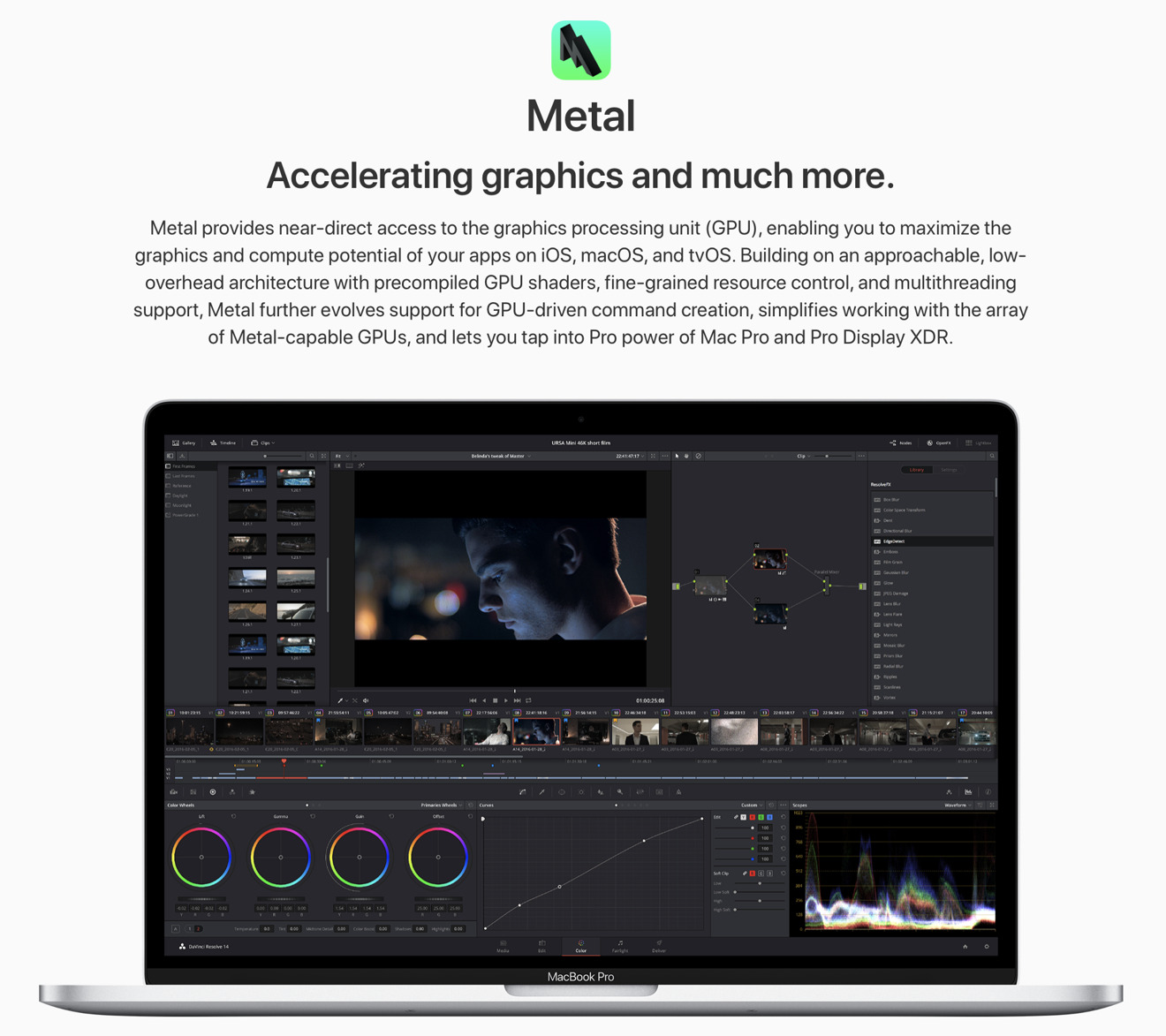Then more recently, I had to upgrade my friends iMAC with a Kepler GPU because Apple's latest OS's from High Sierra onward use a newer but significantly more low-level and efficient METAL graphics. The forums are user-to-user - if you want an answer from Daz you need to ask Daz. I can tell you that DS is working in Catalina for at least some users, though there are issues with anything using file dialogues (which are fixed in the current DS 4.12.1 Public Build).
Here are some feedbacks about the Mac mini M1 I purchased few weeks ago, in order to compile and test GeeXLab with the new Apple Silicon M1.
The M1 Chip
The M1 chip is a SoC (System on a Chip) and includes a 8-core CPU, a 8-core GPU as well as other components like a neural engine, memory or input/output interfaces.
The M1 GPU has a FP32 performance of 2.6 TFLOPS (source). This is more or less the same performance than the Radeon RX 560 or the GeForce GTX 1650:
– GeForce GTX 1650: 2.9 TFLOPS
– Radeon RX 560: 2.6 TFLOPS
See THIS PAGE for a more complete TFLOP table.
Xcode, command line tools
The source code of GeeXLab is based on makefiles and I had no problem to compile all core libraries from the command line. I installed the latest Xcode 12.3 as well as the command line tools (because gcc/g++ are needed). By default, the compilation in command line (like gcc file.c) produces a binary for the arm64 architecture. I was surprised to see that all GeeXLab OpenGL code has been successfully compiled. OpenGL is still there in the latest macOS Big Sur!
Using Xcode 12.3, you can generate a kind of hybrid executable (Apple calls it an universal macOS binary) that packs the x86_64 and arm64 code. But in command line with gcc/g++, you have to specify the target architecture. By default on Apple M1 + Big Sur, gcc will generate an amr64 code. If you want to generate a x86_64 code you have to use the following gcc option:-target x86_64-apple-macos10.15
Example:gcc main.c -o x86_test -target x86_64-apple-macos10.15
To compile for arm64 architecture:gcc main.c -o arm_test -target arm64-apple-macos11
The arm64-apple-macos11 target is handy if you are on an Intel-based Mac mini and want to compile for ARM architecture.
Once I finished to build GeeXLab, I was impressed by its launch speed: very fast. On Linux, the launch of GeeXLab is fast but on macOS Big Sur + Apple M1, the startup is a bit faster.

This is GeeXLab compiled for arm64 architecture:
Rosetta
Mac Pro Compatible Graphics Cards
I compiled GeeXLab in two separate versions: GeeXLab for arm64 and GeeXLab for Intel x86_64. On the Apple M1, you can’t launch an x86_64 executable directly. You have to install Rosetta before. Fortunately, it’s easy, you are guided by macOS:
Rosetta is a translation layer that allows the Apple M1 CPU (arm64 architecture) to execute a x86_64 code developed for Intel-based Macs. The first version of Rosetta was developed for the switch from PowerPC to Intel CPUs. Rosetta 2 is the new version for the switch from Intel to Apple silicon M1 CPUs.
Rosetta works fine: here, we have GeeXLab compiled for x86_64 architecture running on Apple M1:
Here is the same GeeXLab on an Intel-based Mac mini:
Look at the framerate: 1951 FPS (M1 CPU, arm64 native code), 1282 FPS (M1 CPU, x86_64 emulated code via rosetta) and 471 FPS (Intel CPU, x86_64 native code). This statement found on the Apple M1 homepage is true:
And thanks to Metal and M1, some of the most graphically demanding apps perform better under Rosetta 2 than they did running natively on previous Mac systems with integrated graphics.
M1 GPU OpenGL Test
Metal Compatible Graphics Card Mac
Let’s do another test: a shadertoy demo with a heavy pixel shader. I chose a recent demo that gives some good results: Neural Stanford Bunny 5kb.
This demo has been ported to GeeXLab and is available in the shadertoy demopack in the following folder:
geexlab-demopack-shadertoy/gl-32-shadertoy-02/neural-stanford-bunny-5-kb/
Resolution of the demo: 800×480
Some framerates:
– GeForce RTX 2070 on Windows 10: 720 FPS
– Apple M1 Mac mini (arm64 native code): 245 FPS
– Apple M1 Mac mini (x86_64 via rosetta): 220 FPS
– GeForce GTX 750 on Windows 10: 176 FPS
Let’s look at the theoretical FP32 performance of these GPUs:
– GeForce RTX 2070: 7.4 TFLOPS
– Apple M1: 2.6 TFLOPS
– GeForce GTX 750: 1.1 FLOPS
Results sound coherent. This shadertoy test shows us that the M1 GPU is not a toy.
GeeXLab for arm64 can be downloaded from this link.
GeeXLab for x86_64 can be downloaded from this link.
Activity Monitor
macOS Big Sur has a way to know for what architecture a program has been compiled. Launch the Activity Monitor and look at the Architecture column:
– GeeXLab for Apple Silicon M1:
– GeeXLab for Intel x86_64:
OpenGL info
To end this article, here is the OpenGL 4.1 and OpenGL 2.1 data from GeeXLab (M1 arm64) log file. The modern way to do graphics programming on macOS is to use the Metal API (or Vulkan via MoltenVK). But a lot of OpenGL applications exist for macOS and it’s nice to know that they still work. According to the GL_VERSION, OpenGL in macOS is based on the Metal API.
OpenGL 4.1
OpenGL 2.1
Related posts:
Apple Mac Graphics Card
Hey guys in this post i am going to talk about the compatible graphics card for MacOs Catalina.
Metal Graphics Card Mac
Macbook Graphic Card
GTX Titan | GK 110GTX Titan Black | GK 110GTX Titan ZGTX 780 TiGTX 780GTX 770GTX 760 TiGT 740GT 730GT 720GT 710GTX 690GTX 680GTX 670GTX 660 TiGTX 650 TiGTX 645 (Fermi)GT 640 (Kepler edition, GK 107/208 core)GT 630 (Kepler edition, GK 208 core)Quadro 410Quadro K420Quadro K600Quadro K2000/DQuadro K4000/DQuadro K4200Quadro K5000Quadro K5200Quadro K6000Quadro NVS510